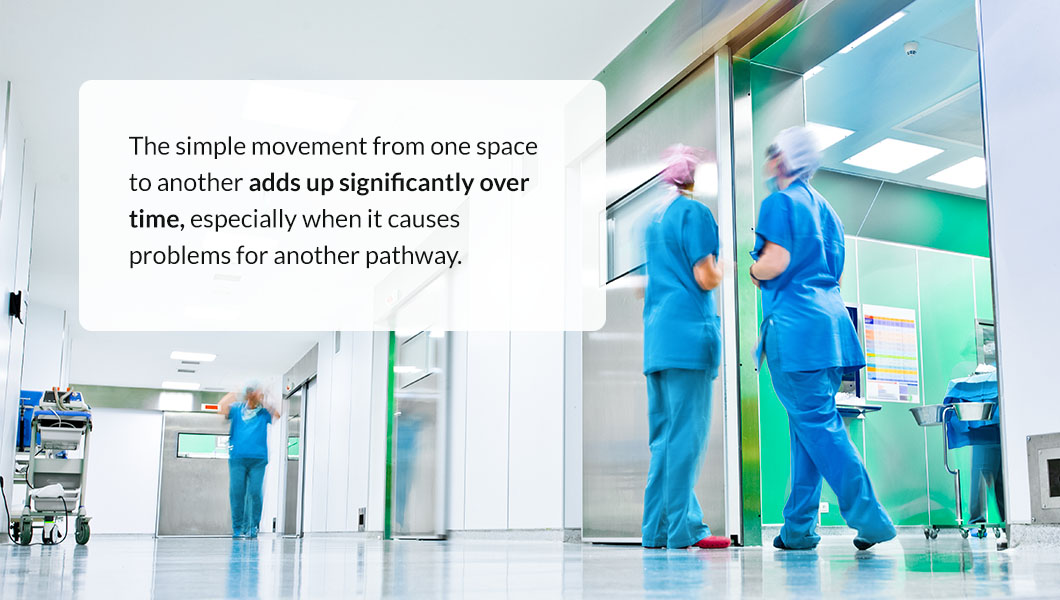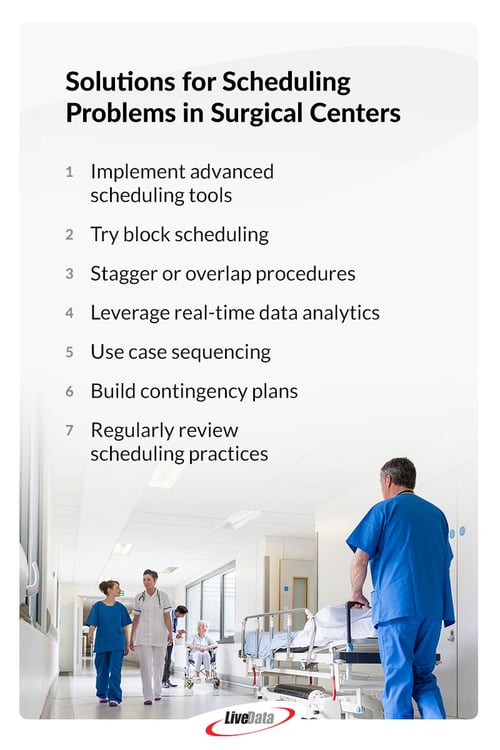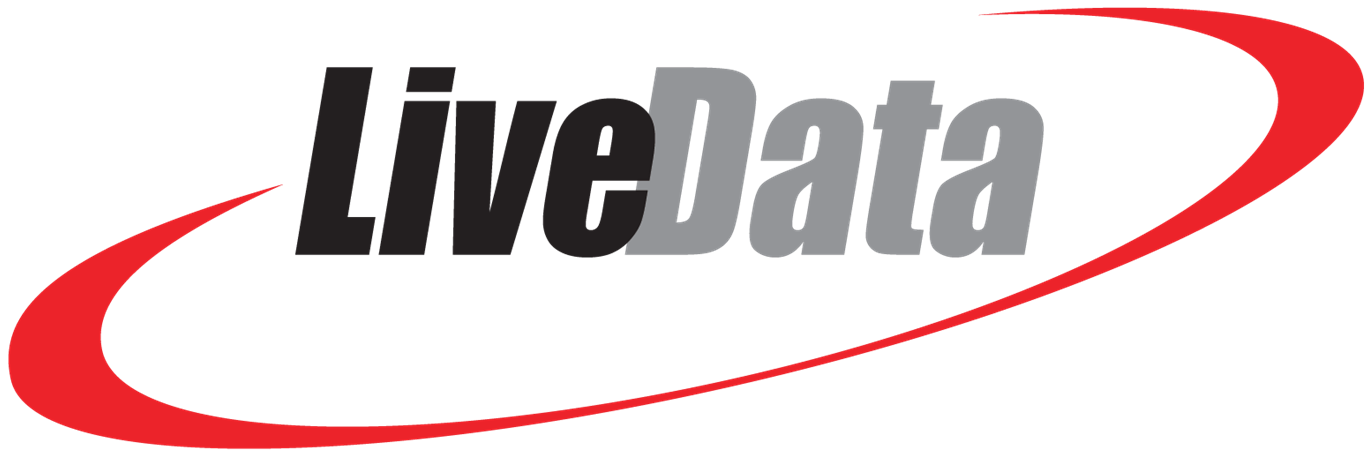The Surgical Center's Guide to Improving Patient Flow Management
Managing the flow of patients calls for a broad range of solutions, which can look vastly different depending on the design and type of facility. Surgery centers especially have unique planning demands due to their throughput requirements. Patient flow refers to the movement of patients through a facility and can affect everything from care quality to staffing needs. Robust patient flow management can significantly impact and has been shown to boost the quality and speed of care, reduce costs, and improve employee satisfaction.
Factors Affecting Patient Flow in the Surgical Setting
Many factors can impact patient flow in surgical centers as patients progress through the perioperative continuum of care. Each of the phases of care: preop, intraop, and postop, has its unique challenges that must be overcome. Frequent communication with the administrative team assists them in preparing and optimizing the flow. Family and friends also need to be kept abreast of the patient’s journey to lessen anxiety and allow them to plan and prepare for discharge. Physical layout, scheduling, staff allocation, technology, and regulatory requirements are a few factors that may potentially have the greatest impact.
1. Physical Layout Considerations
The physical space can significantly impact how patients move through the facility, how people interact, and how quickly surgical team members can complete their work. The simple movement from one space to another adds up significantly over time, especially when it interferes with another pathway.
For example, if a patient crosses a perpendicular hallway between reception and the waiting room, they may become mistaken and head off in the wrong direction, creating confusion and a potential delay in care. Another scenario can be found in the OR. If the supply room is too far from the surgical suites, walking back and forth with supplies could increase prep time, leading to delays in the procedure. Review the physical layout of your surgical department and determine if you can discover any areas to minimize delays or remove friction. Put yourself in the shoes of your patients and staff while walking through a typical day. Bring a trusted colleague or associate to assist. Places to evaluate include:
- Reception
- Pre- and post-operative areas
- Operating rooms
- Multipurpose spaces
Consider how you allocate these spaces, too. Are there any areas where you could perform different tasks that fit the room better or support better patient flow management? Are there improvements that can be made to signage?

2. Scheduling
Scheduling is a consistent challenge for surgical departments. They must often work around time blocks that don't sync up with a hospital's scheduling system. Without real-time insights, surgical centers are prone to an array of problems affecting patient flow:
- Unpredictable events: Surgeries don't always run like clockwork, and everything from procedure delays to patient cancellations can throw off the schedule.
- Overbooking: A lack of schedule transparency increases patient wait time and decreases the quality of their experience. Overbooking may also contribute to frustration and overtime requirements for the staff.
- Procedure complexity: Many factors can impact a procedure's length, and not all are easy to anticipate. The inevitable variation in procedure complexity creates variation in the schedule.
- Resource availability: If the staff can't access necessary resources in time, they will likely fall behind. For instance, running out of essential supplies or dealing with equipment malfunctions can dramatically impact the workflow.
- Pre- and post-operative preparation: Patient prep involves many tasks, and estimating their time requirements can be challenging. One patient may take longer to recover from anesthesia, while another might wait a while for their surgeon to check on their recovery. A limited number of beds can also create roadblocks during pre- and post-op discharge.
These diverse problems require wide-reaching solutions. As these challenges are met, many others become easier to address. For example, hospitals implementing real-time scheduling transparency can make more time available to mitigate overbooking issues.
Some solutions for scheduling problems in surgical centers include:

- Implement advanced scheduling tools: Modern technology can help you automate many aspects of your scheduling and facilitate real-time updates so you can optimize schedules and respond to unexpected interruptions as they occur. One of the most valuable tools for surgeon practices is connecting to the hospital's or surgery center’s scheduling system to facilitate more accurate planning.
- Try block scheduling: If you're not already using block scheduling, consider implementing it. Block scheduling assigns a specific surgeon or surgical group to an operating room for a block of time. This approach allows you to group similar procedures into these times and streamline planning. You can dedicate specialized equipment to specific ORs and allow staff to focus on certain procedures rather than jumping between them.
- Stagger or overlap procedures: Overlapping or staggered procedures can provide more flexibility by providing time gaps. They allow you to optimize resources across these rooms and maximize utilization of pre- and post-op areas.
- Leverage real-time data analytics: Real-time analytics can help you find insights for agile scheduling decisions. Respond to interruptions and unexpected events in ways that promote efficiency and effective patient flow.
- Use case sequencing: Case sequencing allows you to organize procedures based on various factors to improve speed, efficiency, and resource utilization. Consider implementing this strategy, considering the surgery’s duration, urgency, and resource and staff availability.
- Build contingency plans: While you can't anticipate everything that happens in an OR, you can create contingency plans. Have a backup for no-shows, cancellations, and emergencies during surgery.
- Regularly review scheduling practices: Continuously review your performance and re-assess your strategies. Monitor and assess your scheduling efficacy and make adjustments if needed.
3. Staff Allocation
Surgical staffing remains one of the most pressing issues in the healthcare field, and surgical centers that optimize their allocation practices can better respond to the challenge. Staff shortages can reduce your ability to serve patients, increasing wait times and affecting overall efficiency. Inefficient scheduling can exacerbate the problem by creating longer shifts and overtime, contributing to staff fatigue and poor work/life balance.
Even if you have a sizable team, you can experience staffing problems due to misalignment with your team's skills. Inadequately trained staff assigned to tasks that require more experience can contribute to delays. In comparison, relying too heavily on specific team members with considerable skill could cause problems when that person is busy or absent. You must also consider the risk of burnout for that individual.
Try these strategies for improving your staff allocation:
- Cross-train staff members: Implementing a comprehensive cross-training program can provide staff with new skills, allowing for flexibility across tasks and assignments. It also allows agility when faced with unexpected staffing shortfalls.
- Regularly review staff for skill gaps and areas of improvement: Perform regular skills checks to identify areas where your team could use additional training or resources to increase competency and flexibility.
- Allocate staff based on skills, specialization, and experience: Consider what they offer when assigning team members to certain tasks. The right mixture of expertise helps them move more efficiently and improve the quality of care.
- Ensure open communication across clinical and administrative teams: Whether performing care or organizing it, administrative and clinical staff must be on the same page. Promote open and honest communication and implement tools to increase visibility, such as dynamic data and scheduling displays.
- Maintaining sufficient staffing levels: Having enough staff can be challenging when dealing with shortages and call-offs, but keeping things moving efficiently in a surgical center is essential. Keep your staffing levels strong.
- Develop contingency plans: Create backup plans for unexpected events, like staff absences, emergencies, or spikes in patient volume. You could also enlist the aid of per diem personnel or adjust the start time of another procedure to prevent patient flow bottlenecks.
4. Technology
Today's medical facilities depend on technology to work more efficiently and surgical centers are no exception. Your approach to technology can significantly affect patient flow from automation to integrations with other programs.
A prominent issue for many surgical centers is using tools that don't align with their precise needs. More generalized systems aren't targeted to surgery workflows so they can lack features like schedule visibility or real-time data access.
Other technological problems can include:

- Security risks leading to concerns over patient data storage and inefficient data handling processes
- Poor interoperability prevents different systems from communicating with each other to update patient information
- High costs of procurement and maintenance that inhibit the adoption of new, beneficial technologies
- User adoption problems, such as inadequate training, cause staff to be hesitant to use new tools
Some ways to address these technology challenges include:
- Advanced scheduling tools: We mentioned some of these resources earlier, but advanced features can offer drastic benefits. Modern programs support more complex tasks, like coordinating many resources and optimizing efficiency based on diverse, frequently changing factors.
- Telemedicine for pre-and post-operative care: In some cases, staff can perform pre-and post-operative care virtually. This approach can reduce the number of beds in use and the time patients must spend in the facility. Where appropriate, telemedicine can help improve patient flow while increasing patient convenience and offering providers more flexibility.
- Automated data entry: Manually entering information is both slow and error-prone. Consider tools like radio frequency identification or barcode scanners to reduce manual entry and allow your staff to work more efficiently.
- Self-service patient portal tools: Lean on your patient portal to offload certain tasks. Rather than drawing from your team's limited time, patients can use their portals to schedule appointments, get test results, and even complete forms before their appointment, reducing the preoperative workload.
- Real-time bed management systems: By offering real-time insights, bed management systems can help you see the status of beds across the facility for more operational efficiency. They provide visibility and can help you make operational decisions with the most accurate information.
- Improved interoperability: Interoperability ensures all the platforms you use work well together and connect their data sources, from patient information to surgeon availability. Make sure your systems integrate properly with each other to improve your decision-making capabilities.
A cohesive approach to technology can dramatically reinvent the surgical workflow. It's also crucial for keeping up with industry changes and patient demands.
5. Regulatory Requirements
Healthcare regulations constantly evolve, and complying with them requires careful attention to detail. In a busy surgical center, these demands can negatively impact patient flow. The tasks might be slow or require work, interrupting normal operations and patient flow.
For example, facilities perform various tasks to comply with standards from organizations like the Joint Commission or the United States Department of Health and Human Services. If these processes are inefficient, such as slow documentation or cleaning methods, they could cause delays. Leaning in on your patient portal is an excellent example of speeding up the documentation process. Another would be coordinating with your Infection Control Department to find a fast and effective cleaner for Environmental Services to utilize when turning over surgical suites or other patient spaces.
Documentation can be particularly troublesome when patients spend too long filling out forms or staff members spend too long entering them into computers. Regulated staffing ratios also impact patient flow and can determine staff allocation, so surgery centers must consider these factors when determining schedules.
You can simplify regulatory considerations with strategies such as:
- Developing a compliance program with regular training: A dedicated compliance program can ease regulatory concerns by outlining necessary behaviors. These programs could contain training guidelines, expectations for staff, and standard procedures for certain tasks. You can also use a compliance program to create a schedule for regular activities, such as validating records, reviewing workflows, and training staff.
- Using technology: Modern programs can vastly simplify compliance concerns ranging from patient privacy to reporting. Look for areas where your technology can help, such as generating detailed reports for audit purposes or helping you maintain appropriate patient-to-staff ratios.
- Streamline and standardize documentation: Simplify your documentation practices by making them faster and easier to work with across all touchpoints. For instance, you might streamline registration forms by having patients submit them online or avoid manual errors by automatically generating monthly reports. Look for any inconsistencies that could create friction, such as a mixture of digital and written data.
Regulatory requirements should be integrated into everyday operations so they can potentially impact your patient flow. Automating regulatory processes wherever possible can be difficult, but it is invaluable for staying on inspection-ready and on top of requirements.
Optimize Patient Flow With LiveData
Effective patient flow management is crucial for optimizing operations in surgical centers. You can improve the patient experience, save costs, and streamline your OR workflows with the right combination of resources and strategy.
LiveData PeriOp Manager™ is a real-time logistics solution designed for surgical teams to help with many of the tasks we've discussed. It integrates with your electronic health record to offer tools for planning, coordinating, and analyzing surgery for simple adherence to patient flow best practices.
LiveData PeriOp Manager™ supports the surgical journey through visual tools, real-time data access, automation, and more. Trusted by some of the nation's leading medical institutions, LiveData can transform your approach to patient flow management. Explore the product suite today, or reach out to request a demo and learn more.


